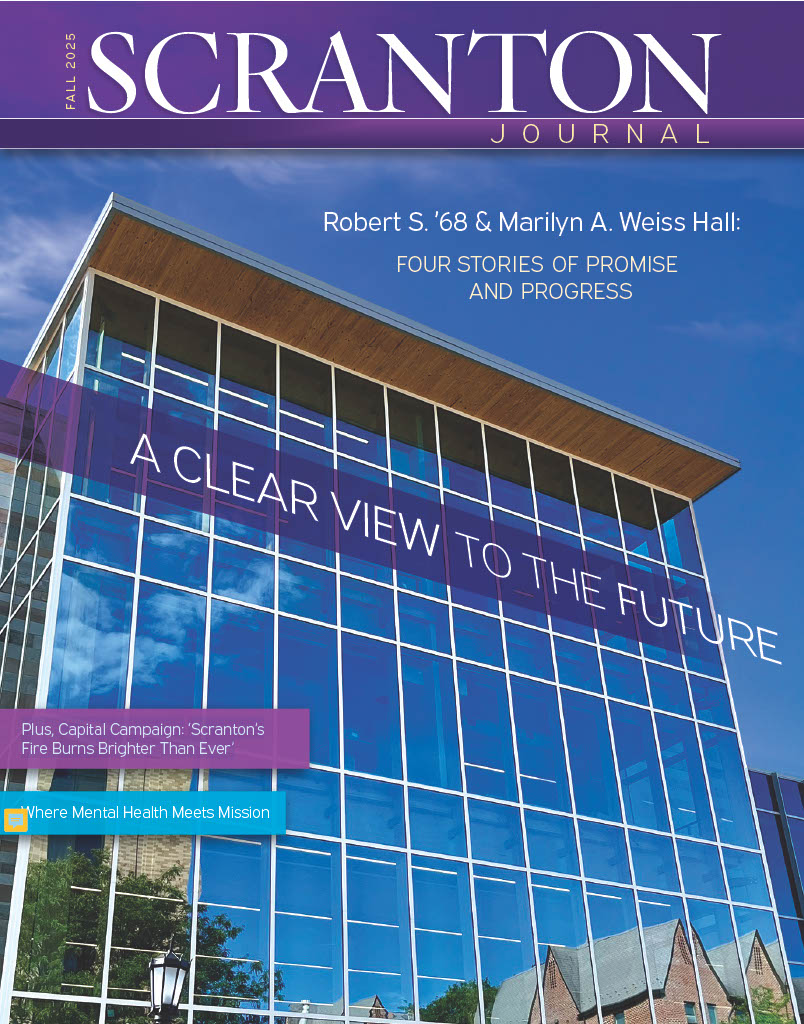Students arrived at Lackawanna County Prison last fall unsure of what to expect.
They had trained for this — gone over the
A Sacred Space
During her junior year, Laura Bopp ’17 attended the Ignatian Family Teach-In for Justice. She heard a panel discussion about the injustices in prison systems and the lack of programs for inmates. She approached Campus Ministries’ Center for Service and Social Justice (CSSJ) soon after with an idea for an education program for prisoners. Her idea eventually developed into the Literacy, Education, Advocacy in Prison program (LEAP), designed to create a safe space for inmates to express themselves through writing.
Despite an initial “barrier,” the “women really opened themselves up to us, which was really beautiful to watch,” said Bopp. “We created this space for them where they felt comfortable enough to share.”
Amy Fotta,
“It never worked out the way we planned. One week we’d have five inmates and the next 20,” said Fotta. “But it was amazing how we were able to take language and writing and words and really have this sacred space, a space of openness, a space of trust.”
When LEAP student volunteers arrived, the inmates initially questioned their motivation. Volunteers explained they were not gaining anything, at least in terms of service hours or credit. The focus was “help them build their skill,” said Fotta, through various genres, from word mandalas (circles of meaningful words or phrases) to short fiction. During the first semester, volunteers asked the inmates to work together to create a piece of blackout poetry, which turned out “really cool,” said Amanda W., an inmate who attended the classes. And students and inmates worked together on a “story in the round.”
There
An Education
“Programs like this work,” said Harry Dammer, Ph.D., associate dean
Although the LEAP program is not technically a college-education program, it has the possibility of inspiring the kind of confidence that might put inmates and institutions on that track. “The educational needs of inmates vary greatly so even a basic reading course or GED program can be helpful. It doesn’t have to be college-level work,” said Dr. Dammer.
Connecting and Reflecting
“I definitely thought it was different from the programs we have here. We aren’t offered much,” said Amanda. “The best way to describe it, as cliché as it is: There’s not a lot of ways to express your creativity in here, and Scranton made a good outlet for that.”
Inmates were connecting to one another and to the volunteers. There was a “mutual understanding, inmate to inmate” said Amanda. “And the volunteers didn’t look down on us like a lot of people do.”
The LEAP students never asked the inmates to share their personal stories, but they often did anyway. They spoke of being separated from family. They wrote of the longing they felt for their children. However, some used their writing as a form of escape, inventing characters far outside of the prison walls, including Amanda, who said she preferred fiction for that reason.
“(The program) helped me to think more positively. I mean, there’s not much to hope for in
The freedom to express their thoughts creatively had a positive impact, the group found upon a final reflection at the end of the semester. That culminating meeting, or “debrief” as they called it, ended in tears. Volunteers learned, as one student put it, “the power of openness and acceptance.” The barrier was gone. A sense of connection was palpable around the table.
“A lot of our eyes were opened to the humanity that lies within all of us,” said Bopp.
Amanda said she and her fellow inmates were grateful for the time and space to create their stories.
“For those hours, we weren’t criminals. … We were normal people.”



